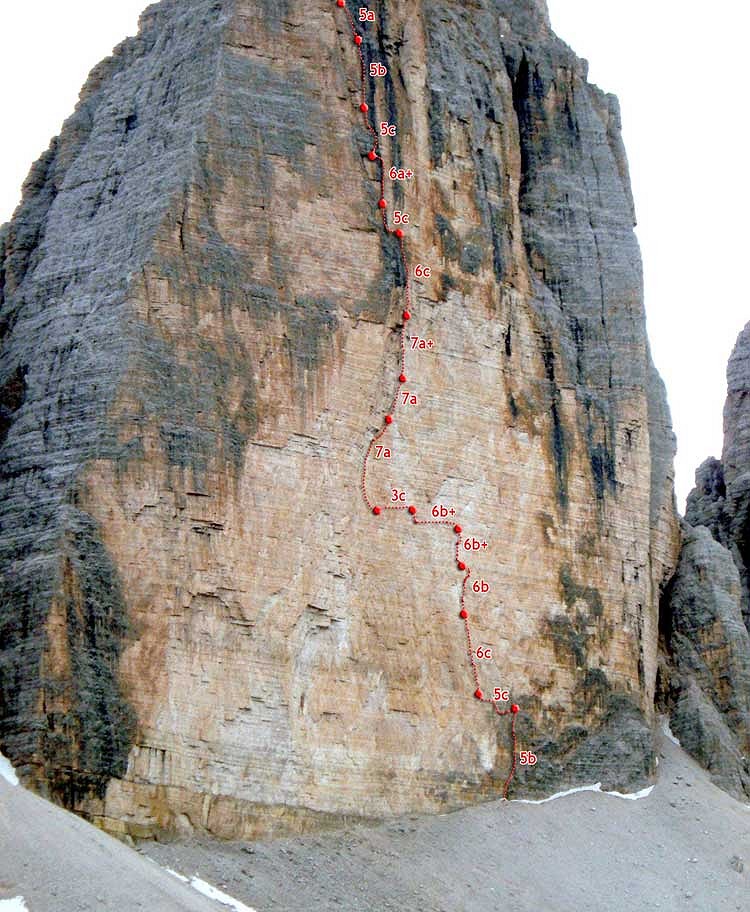
Of the early routes, Comici's creation (known simply as The Comici Route) from August 1933 climbs the only obvious line of weakness in the North face – a huge crack system on the right hand side. This is by far the most popular route on the face and during our visit to the area we saw many parties attempt to scale its long chimneys and steep cracks. The blank yellow sweep of wall thundering leftwards from the safety of Comici's chimneys screams impossible to anyone looking from below. 500 meters of smooth and overhanging rock appears more like an arena of modern sport routes than a canvass for 1950's alpine excursions. On closer inspection through some optimistic eyes, a line of corners can be picked out high on the wall. Reaching them appears to be the crux of the route, but such is the secretive nature of the rock – littered with hidden crimps and blind pockets, that the obvious corners themselves offer the hardest technical climbing. The lower pitches, although difficult to envisage from the base, provide steady climbing on reasonable holds.
Dietrich Hasse, the main driving force behind the first ascent of the Brandler-Hasse route (known then simply as 'The Directissima') scanned carefully every inch of the face when he climbed the Comici route. It was this knowledge of the lines of weaknesses that gave him the courage to start out on his wild journey upwards that was to yield one of Europe's best and most sought after prizes.
Our initial attempt at the route was thwarted by our impatience to start climbing and by a poor and inaccurate topo that we printed from the internet. We arrived at the base of the wall in the semi-darkness of dawn with no guidebook and no map. Spurred on by the words of our topo 'it's impossible to go the wrong way...', I launched up the freezing rock, full of fighting spirit.
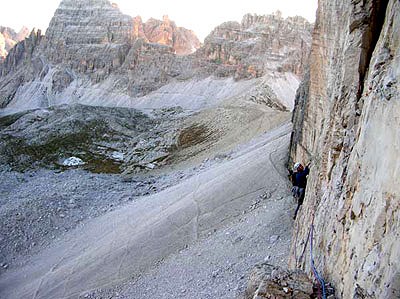
Our successful ascent was quite an adventure. We found the corner pitches seeping with water, but the positive nature of the holds still allowed us an onsight and free ascent. A topo with inaccurate pitch grades and descriptions added to the sense of unknown. Chalk dots remained on some holds from Alex Huber's amazing free solo of the route in 2001. I can only imagine how exposed those pitches feel without the comfort of a rope and partner.
It is difficult to transfer the grade of the route in to the British system, but I would say that a party capable of confidently climbing multi pitch E5 on a cliff such as Gogarth would be suitably experienced to tackle the Brandler-Hasse.
Approach and The Route
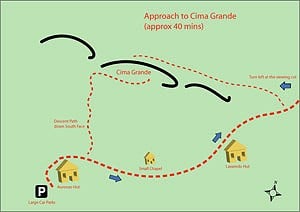
The route starts on the right hand side of the face at a pillar of easier angled dark rock. This pillar is climbed for one long pitch (either the obvious wide corner crack or slightly to either side) until a ledge and fixed belay is reached. From this belay descend the left side of the ledge for 3 meters then traverse horizontally leftwards for 1 pitch.
From here on the route is obvious and follows pegs up the only real line of weakness.
The three crux pitches in the corners are all adequately protected with some nuts and friends, but mainly insitu pegs of varying antiquity. The first 7a pitch follows a steep rightward trending corner with underclings and a crux at the end. The second 7a pitch is a wide crack on the left enabling jams and shoulder bars with reasonable foot holds and crimps on the right wall. The final 7a+ crux pitch is a stamina crack, steeper than it looks, protected by many old pegs.
Descent
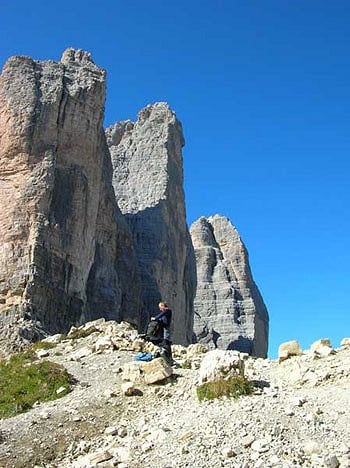
Rack
We mainly clipped insitu gear, but a light rack of nuts and friends are needed to back it up in places. A large selection of quickdraws (approx 20) to clip in to pegs and tat are essential. Most belays are fixed with pegs and there are some bolts.
Money saving tip:
The toll road up to the large car park is unmanned after approximately 9pm. Many campervans and climbers sleep in the top car parks to enable an early start – so it is best to head up the road after an evening pizza in Misurina.
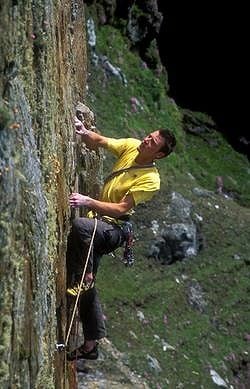



Comments